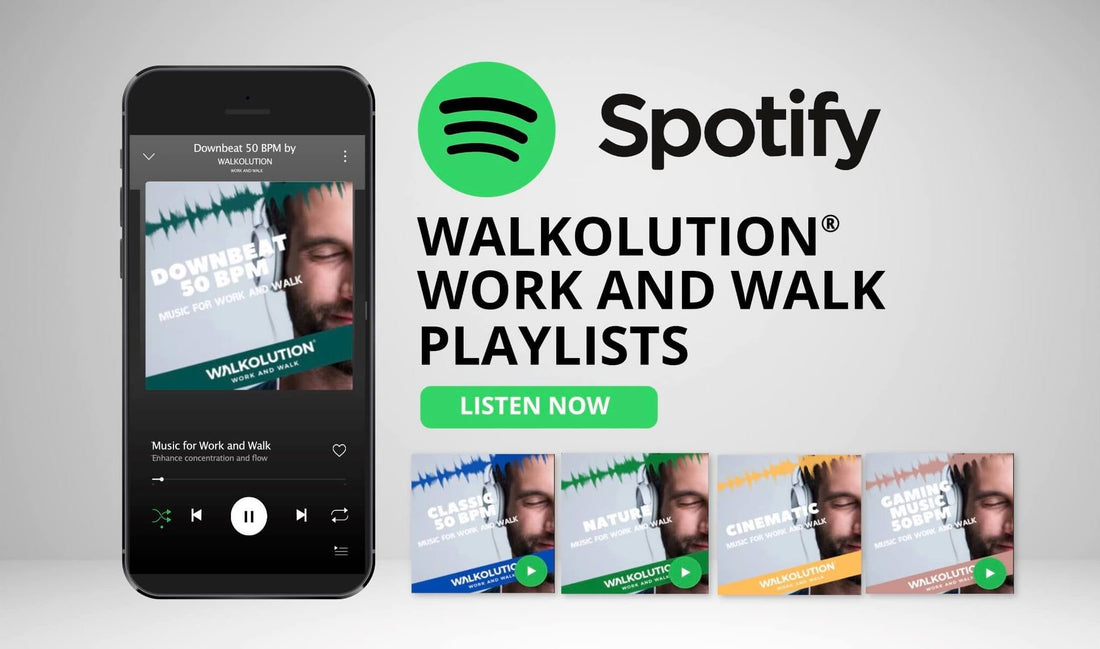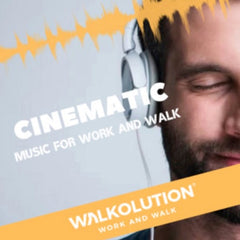Do you prefer listening to music while you study or work, or can you concentrate better when there is absolute silence? Everyone is different, but there is increasing evidence from neuroscience that listening to the right kind of music can really put the brain into a concentration and learning mode.
If we delve a little deeper into the subject, it becomes apparent that our entire lives are shaped by rhythms and they have a profound influence on how we walk, talk, and think.
In search of the right frequency
Humans can distinguish a range of tempos in music from about 40 to 300 BPM (beats per minute). When the value falls below 40 BPM, we are unable to identify or recall a recognizable pattern. Music above 300 BPM, begins to blur into a continuous sound.
There is a wide range of possibilities between 40 and 300 BPM. But where is the ideal speed for music during cognitively demanding work?
A healthy heart beats 50 - 70 times per minute
A study by Dr. Emma Gray of The British CBT and Counseling Service for Spotify found that people are generally more relaxed when listening to songs from 50-80 BPM, and being relaxed is a great productivity booster. When we hit that BPM sweet spot, the mind becomes calm and alert and concentration is increased. Listening to music in the 50- to 80-beat range puts the brain in an alpha state.
When we are awake, we are typically in a state of mind known as beta, a heightened state of alertness in which our brainwave activity is between 14 and 30 HZ. When the brain slows down to 7 to 14 HZ, we are in a more relaxed alpha state that allows us to be more receptive, open, and less critical. Scientists associate this state of mind with activities involving imagination, memory, and intuition.
Gray states in her findings that it is not the genre of music, but the tempo that has the most to do with creating a flow state.
Where this comes from is impossible to answer conclusively, but all of life follows a rhythm. It starts in the womb when the unborn child senses the mother's heartbeat, which is at that exact frequency of 50-80 BPM when at rest, signaling to the child that all is well.
The right step frequency when using your Walkolution®
Walkolution® customers often ask about the ideal number of steps per minute when working while walking. Our experience shows that a speed of about 50 steps per minute seems ideal here as well. On the one hand, this is slow enough to still be able to do typical desk work without restriction, but on the other hand, it is a pace that can be maintained for large parts of the day without any problems.
In a hypothetical active workday of 8 hours at a Walkolution treadmill workstation, where one assumes that 75% of the time is spent walking, an impressive 18,000 steps are accumulated, which seems to be well advised from a health point of view. Many studies show that a significant benefit of exercise, when measured in steps, is achieved from about 17,500 steps per day. In this light, the much-vaunted 10,000 steps a day seem much more useful as an advertising slogan than as a truly meaningful target.
What kind of music should you listen to?
Some types of music seem to help with learning and improve our ability to process information. Other music can help us better block out distracting background noise and generally get into a calmer state. In the end, of course, it's also a matter of taste, as personal preferences and feelings are also contributing factors.
Playlists from Walkolution®
During countless Work and Walk sessions over the past few years, we've created playlists and put them on Spotify. You can subscribe to the playlists for free on Spotifiy. New songs will be added regularly. We also welcome your suggestions, which you are welcome to send us in chat or via customers@walkolution.com. The goal is to create the ultimate playlist for flow while working!
Classical music
Researchers have long claimed that listening to classical music can help people complete tasks more efficiently. This theory, called the "Mozart effect," suggests that listening to classical composers can increase brain activity and act as a catalyst for improving health and well-being. Several studies have confirmed that listening to classical music improves the ability to manipulate shapes and solve spatial puzzles.
The absence of language in music could be a factor, as songs with lyrics have been shown to be a distraction when trying to concentrate. And classical music is known to be calming and relaxing, helping to reduce stress. This genre of music has been found to help students perform 12 percent better on their exams.
Nature sounds
Nature sounds, such as the sound of waves or the babbling of a brook, can also help improve cognitive function and concentration. Nature sounds work best when they are soothing sounds, like running water or rain, while shrill sounds like bird calls and other animal noises can be distracting.
Film music
Few other genres have a more specific goal than to create a particular mood in the listener. The right kind of film music is therefore excellent for brightening up your mood, for example, or giving everyday moments something special.
So, if you feel tired and drained, try an epic movie score to give you an extra motivational boost.
Gaming Music
At first glance it may seem strange, but music made for video games can help wonderfully to focus. After all, video games are all about keeping the player focused on the task at hand without getting distracted. The soundtracks of video games therefore usually don't get any lyrics or voices and have a tempo that is supposed to keep you going and keep you entertained.
Gaming Music can therefore be just the thing to get you through the tasks at the end of the day before quitting time calls.
Downbeat / Lo-Fi
Sometimes variety simply counts. This genre includes music from different areas. What they have in common is that they increase concentration and create a feeling of flow during work.






